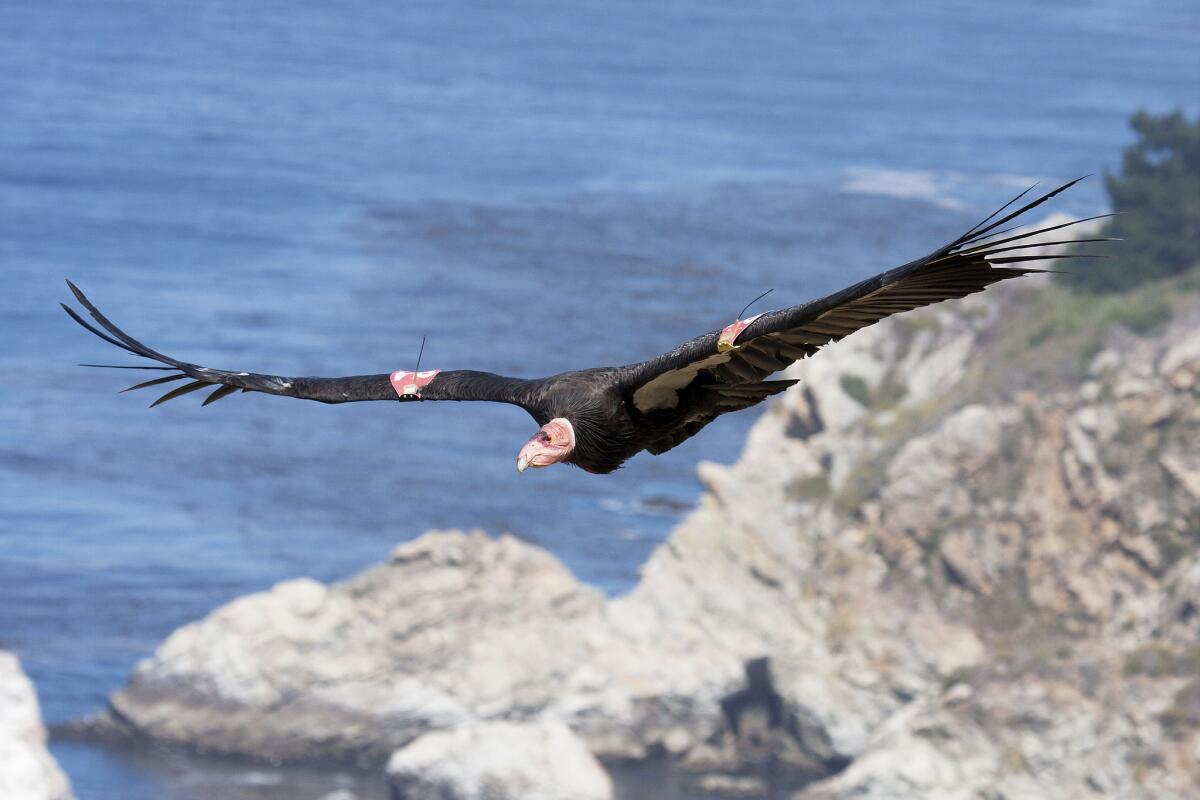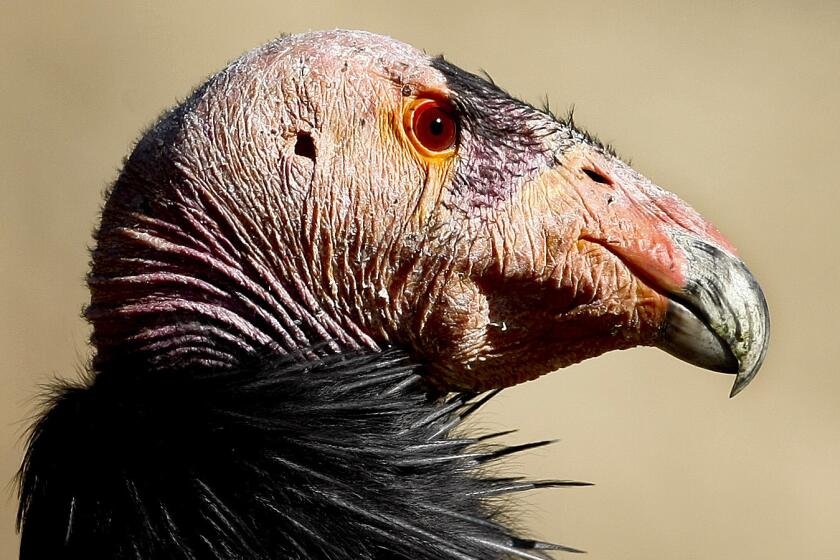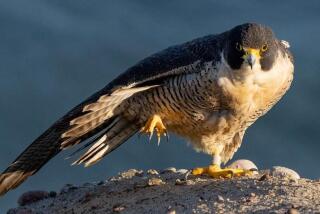Endangered California condors in Sequoia National Park for the first time in 50 years

- Share via
For the first time in nearly 50 years, California condors have been spotted at Sequoia National Park, wildlife officials announced.
The majestic scavengers, the largest land bird in North America, with a 9.5-foot wingspan, once inhabited areas stretching from California to Florida and Western Canada to Northern Mexico. They were listed as endangered in 1967 by the federal government, according to the U.S. Fish and Wildlife Service.
At least six condors were spotted in the park in late May, including two near Moro Rock, a popular hiking destination. Four others were seen in the Giant Forest, the National Park Service and the U.S. Fish and Wildlife Service said Tuesday in a joint news release.
Condors historically occupied the Sierra Nevada mountains and were known to nest in the cavities of giant sequoia trees. But by 1982, the flock’s population had dropped dramatically — largely because of lead poisoning — leaving less than 25 surviving condors, officials said.
The handful of remaining birds were placed in a captive breeding program at the Los Angeles Zoo and San Diego Wild Animal Park to prevent them from going extinct, wildlife officials said.
Condors were released back into the wild in 1992 in the mountains of the Los Padres National Forest in Southern California. This flock grew to 100 through the continued release of captive-bred birds and wild reproduction, along with the support of private and public agencies and organizations, local communities and landowners, biologists said.
Since being released nearly 30 years ago, California condors have been seen flying near Sequoia in the last seven to eight years, but May was the first time they actually landed in the park, according to Tyler Coleman, a wildlife biologist with Sequoia and Kings Canyon National Parks.
Southern California places where you can watch these big birds, which were brought back from the brink of extinction
“It took decades for the population to recover to the point where they were being seen in locations far beyond their release site,” Coleman said Wednesday. “This is evidence of continued recovery of the species. The animal was on the brink of extinction, and arrival in Sequoia is good evidence that they are utilizing and occupying habitat where they once lived. It is an important milestone.”
Wildlife biologists used GPS to locate the condors in the towering trees and craggy cliffs of the parks.
“We use GPS transmitters to track the birds’ movement, which can be over hundreds of miles on a single day,” said Dave Meyer, a California condor biologist with the Santa Barbara Zoo.
“On this particular day, we documented the birds’ signals around Giant Forest, and we are excited that park employees observed the birds and confirmed their use of this important historic habitat,” he said.
GPS data allows biologists to identify important habitats, locate condor nesting and feeding activities, find sick and injured birds and locate condors that have died in the wild.
Researchers say lead poisoning is responsible for half of all condor deaths in which a cause is identifiable. The birds scavenge for their food, feeding on the bodies of dead animals, which often contain fragments of lead ammunition.
“Lead-core bullets shed weight in small fragments as they hit game, and have the potential to poison wildlife, including condors, who scavenge the remains,” said Chad Thomas, an outreach coordinator for the Institute for Wildlife Studies.
Thomas said his team educates hunting and ranching communities, which are key partners in wildlife conservation, on how ammunition impacts scavengers and about non-lead bullet options.
As their population continues to grow, condors have expanded their geographic range and now occupy portions of Ventura, Santa Barbara, Los Angeles, San Luis Obispo, Kern, Tulare, Fresno and Madera counties and the Sierra Nevada mountains and adjacent foothills, officials said.
Condors have also returned to areas along California’s Central Coast, at Pinnacles National Park, and in Arizona, Utah, and Baja California, with a total wild population of approximately 340 birds, officials said.
“As biologists, we are excited to see condors continue to expand back into their historic range, and also for the opportunity to engage with the local communities to share what they can do to contribute to the recovery of California condors, and also inform them about threats to these birds,” said Laura McMahon, wildlife biologist with the USFWS California Condor Recovery Program.
Click here for more photos of the late-May California condor sighting.
More to Read
Sign up for Essential California
The most important California stories and recommendations in your inbox every morning.
You may occasionally receive promotional content from the Los Angeles Times.












